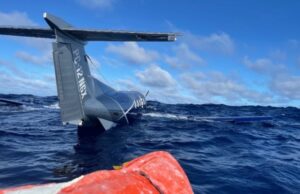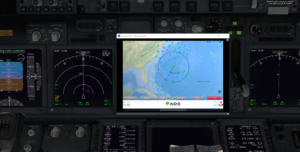On January 15, 2019, US Airways flight 1549 made an emergency landing in the Hudson River shortly after the Airbus A320 left LaGuardia Airport in New York on its way to Charlotte, North Carolina.
This incident is one of the most well-known ditching events, thanks to a blockbuster named after the pilot who made the miracle landing, Sully.
However, it isn’t the first time this emergency maneuver has had to be used, and it certainly won’t be the last. But what are the protocols and procedures that a business jet crew should take to ensure the safety of everyone aboard if the worst-case scenario happens?
“Ditchings are rare and should continue to decrease in the future,” says Dave Montgomery, the author of ‘Blue Water Ditching – Training Professional Crewmembers For the Unthinkable Disaster’. “In the 1960s and through the 2000s operators in FAR Part 91, 121, 135, and the military trained ditching because it happened more often and the risk was large.”
“A ditching should be considered by a pilot when the flight can no longer be safely continued, and the occupants of the aircraft must be removed or face death,” says Jim Stabile, CEO of Aeronautical Data Systems.
“Thankfully in 2023 safety is greatly enhanced and the risk factor of ditching is small as we have engines that seemingly never quit, fuel tanks that don’t leak, pressurization systems that maintain their integrity, electrical systems that maintain their integrity and interiors that are very flame retardant,” says Montgomery.
Aeronautical Data Systems main product, an iPad app called ERGO Blue, aims to help pilots during a ditching. The app displays ship location along a specific route of flight and provides automatic distress calling to all ships within the VHF radio range.
“The data is inserted into a computer-generated distress message written in maritime vernacular and is updated every 2.5 minutes with new data,” explains Stabile.
“The distress call needs a maritime band handheld radio to send the message.”
ERGO Blue is designed to reduce pilot workload and the time of rescue while increasing the pilot’s situational awareness during an emergency. “The biggest decision a pilot will ever make is to ditch the aircraft. Some situations are very clear, such as a total loss of power or an uncontrollable onboard fire,” says Stabile.
“Other situations might be non-time critical such as a fuel leak, where the aircraft may be unable to land at an airport, or a decompression, for which the pilot must descend to a lower altitude where the fuel consumption increases, thus reducing his landing fuel to the point where an airport landing becomes impossible.”
Different flight
Stabile notes that when discussing ditching it is important to consider the specific mission of that flight. “For example, any offshore drilling operation that uses helicopters will have some form of increased exposure due to the low altitude they fly, plus the number of flight cycles, which are all overwater,” he says. “Small aircraft flights to island destinations have the same exposure.
“You must remember these flights do not have the resources to hire flight following, training or other assistance that a large airline or corporate flight department may have at their disposal.
“Each operation depends on the type of flying and frequency will have a different exposure to whether a ditching may occur.”
Procedures and protocols

To start a ditching procedure, the pilot must be able to see a vessel. “But what happens if you have to ditch at night, in low ceiling or low visibility conditions?” asks Stabile.
Since ERGO Blue displays data on an iPad about ship position, the pilot can either use the iPad to fly towards the ship or the pilot can insert this data into the onboard computer system and let the aircraft fly to the ship without ever actually seeing the vessel.
“Pilots can now ditch as close as possible to a ship and never have to visually see the vessel. It is like an instrument landing in bad weather,” says Stabile.
If a pilot is at altitude and has some time to prepare, as opposed to being on fire and having to ditch immediately in deep water, the pilot will usually declare an emergency with air traffic control.
“Air traffic control then will call the RCC [rescue communication center] in that part of the world. In the USA it is our Coast Guard. Then the Coast Guard will contact Amver – another branch of the Coast Guard which will have the same data, including ship location, that ERGO Blue presents to the pilot.”
Amver will then suggest a ship best suited to the pilot and this information is returned through this communication chain. “This is time-consuming and inefficient during an aircraft emergency,” says Stabile.
ERGO Blue is the only dedicated deep water program that provides vessel location data to the pilot and offers the automatic distress communication link.
“In addition, Aeronautical Data Systems and Dave Montgomery are the only resources available that expand the possible ditching envelope by offering flight crews access to the data in a format flights crews can easily understand,” explains Stabile.
“Years ago, the FAA reduced the training for ditching,” says Montgomery. “But Pilots have a very strong desire to know everything that can happen. I have been following what is happening for twelve years.”
Training matters

Montgomery believes that with more than 2,700 blue water crossing flights a day, it is paramount that aircrews have a strategy in place for when disaster strikes.
“Ditchings are rare but can be catastrophic when they do happen. Having this data available for every overwater leg is as essential as having the weather or a flight plan,” agrees Stabile.
According to Stabile, there are training centers across the world that offer some training for ditching. “The training can vary from simply showing crew an inflated raft to actually being in a body of water performing the tasks and procedures required.”
“I brief pilots that ditching training should not be a yearly requirement but should be reviewed and “chair flown” in detail every five years,” explains Montgomery.
Deciding to ditch in deep water is by no means the hardest part of the situation. Once that aircraft hits the water drowning, hypothermia and injury from the landing are all dangers that could result in death.
“Deepwater ditching for business jets is the least talked about, least understood, and most dangerous since this has two parts to it,” explains Stabile. “First landing the aircraft intact and then next getting into a life raft and most importantly if you get this far – time of rescue.”





